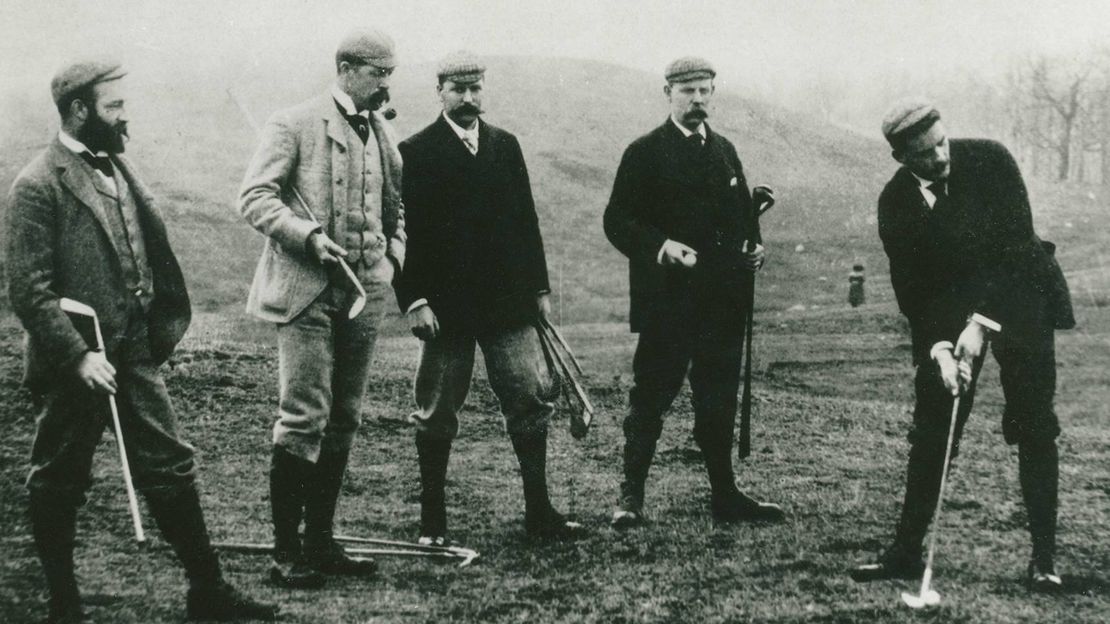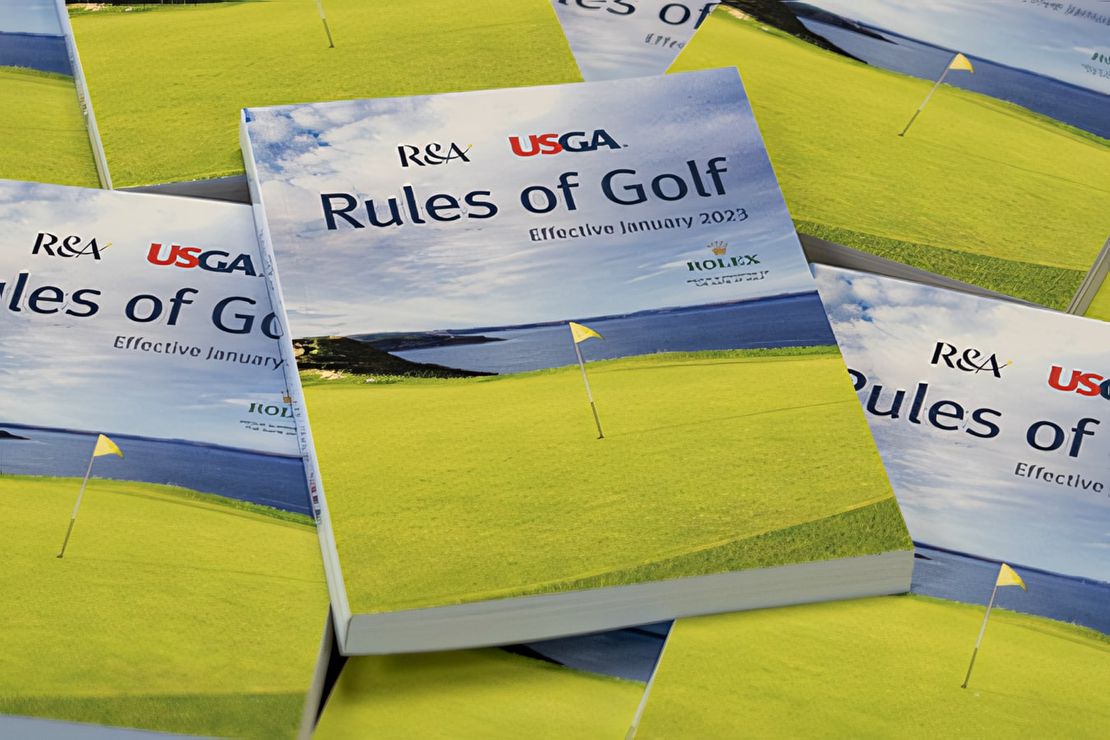
The Evolution of Golf Rules: A Tale of Two Continents
- John Whitaker
- Golf , History
- June 12, 2024
Table of Contents
The game of golf is well-known for its challenging play on famous courses and its complex and ever-changing set of rules. Originating from the windswept dunes of Scotland, the rules of golf have evolved from a simple set of guidelines to a detailed system that governs play at every level, from casual players to professional golfers. This article delves into the rich history of golf’s rule-making, exploring how different traditions and governing bodies in Europe and America have influenced the game’s regulations over centuries.
While the Royal & Ancient Golf Club of St Andrews (R&A) and the United States Golf Association (USGA) have collaborated to establish a unified set of global rules today, their individual journeys are a fascinating study of the influence of unique cultural and historical contexts. From the earliest recorded rules in the 15th century to the latest revisions, the evolution of golf’s rulebook is a reflection of broader changes in society, technology, and the very essence of the sport, each change a testament to the diverse influences that have shaped the game.
We will explore “The Evolution of Golf Rules: A Tale of Two Continents,” uncovering the historical developments that have shaped golf’s governance on both sides of the Atlantic and how these rules have helped preserve the integrity and spirit of the game.
As we look at the evolution of golf rules from both sides of the Atlantic, it’s important to recognize the spirit of the game that transcends geographical boundaries. Preserving the tradition while adapting to the changes of modernity is what keeps the game alive and vibrant. — John Whitaker, 1989
Early Beginnings
Europe
The game of golf claims its origins from the rugged coastlines of Scotland, where it was first played in the 15th century. The oldest known rules of golf were penned in 1744 for the Company of Gentlemen Golfers, later known as The Honourable Company of Edinburgh Golfers. These rules were relatively simple and provided a structure for competition among society’s members. The pivotal moment in the codification of golf rules it occurred with the formation of the Royal & Ancient Golf Club of St Andrews (R&A) in 1754, which eventually took on the responsibility for overseeing the rules of the game across the globe. The early Scottish rules emphasized honesty, integrity, and sportsmanship, setting a tone that has permeated the sport ever since.
America
Golf arrived in the United States several centuries later, with the first permanent golf club established in 1888 at Saint Andrew’s Golf Club in Yonkers, New York. Recognizing the need for a standardized set of rules, representatives from golf clubs nationwide formed the United States Golf Association (USGA) in 1894. The USGA quickly standardizes the game’s rules, borrowing heavily from the R&A’s established regulations. The creation of the USGA not only helped to unify the rules across the different courses in the vast country but also laid the groundwork for the future growth and organization of golf in America.
Early Interactions and Influences
Although the Atlantic Ocean separated the burgeoning golf communities of Europe and America, there was considerable transatlantic influence on the rules from each side. Notably, early American golfers and rule-makers frequently consulted with the R&A, seeking to align their local competitions with the broader traditions of the game. This cooperation began a long-standing relationship that would shape the governance of golf worldwide.
Cultural and Administrative Divergences
As golf matured as a sport, the paths taken by Europe and America in the administration and cultural appreciation of the game began to show distinctive traits, influenced heavily by each region’s unique cultural, social, and administrative frameworks.
Cultural Impact
Europe
In Europe, golf is steeped in tradition and closely linked to its Scottish origins. It emphasizes a solid adherence to tradition, sportsmanship, and the ‘spirit of the game.’ This reverence for history often influenced the rules and how they were enforced, with a focus on maintaining the integrity and original spirit of golf. European golf culture has always valued slow and strategic play, which is evident in the design of courses that emphasize natural landscapes and tactical challenges.
America
Conversely, in America, golf has developed a slightly different cultural significance. It became not just a leisure sport but also a symbol of social status and business networking. The American approach to golf was more inclusive in terms of public access to courses and less rigid in adherence to tradition, allowing for more innovative and aggressive play styles. This attitude influenced the USGA’s rules, which tended to adapt more quickly to changes in technology and player behaviour, such as the introduction of golf carts and advances in club and ball design.
Administrative Differences
Governance Styles
The administrative bodies in Europe and America, namely the R&A and the USGA, reflect their respective cultures in their governance styles. The R&A has traditionally taken a more conservative approach, slow to change and deeply respectful of the game’s origins. Their governance style reflects a broader European tendency towards maintaining continuity with the past.
In contrast, the USGA has often embraced a more dynamic governance model. It has been quicker to introduce and enforce new rules that address contemporary issues, such as technological advances in equipment. This proactive approach reflects a broader American culture that values innovation and efficiency.
Rule Enforcement and Adaptations
The way rules are enforced also differs significantly between Europe and America. European courses and tournaments often emphasize self-policing and honour-based systems, relying on the integrity of individual players to report breaches. American tournaments and public courses, however, are more likely to employ formal marshals and use technological aids like GPS and laser rangefinders to enforce rules, which aligns with a culture that prioritizes fairness and objectivity.
Local Rules and Adaptations
Local rules also demonstrate these divergences. In Europe, many courses have specific local rules that cater to the unique challenges presented by their environment, such as stone walls on links courses or particular weather conditions like fog and wind. These local rules are often deeply embedded in the local playing culture and can vary significantly from one course to another.
While local rules also exist in America, there is a stronger emphasis on standardization across different courses. This reflects a cultural preference for uniformity and equity in competition. This approach helps to simplify the game’s understanding and application for a diverse population of players.
Impact of Cultural Exchanges
Despite these differences, golf’s global nature has facilitated a rich exchange of ideas and practices between Europe and America. Major tournaments that attract players from both continents and the increasing movement of golfers between tours have led to a gradual blending of cultures. This has been particularly evident in how the newer generation of golfers, coaches, and administrators approach the game, often incorporating a mix of European tradition and American pragmatism.
Major Milestones in Rule Harmonization
The journey toward harmonizing golf rules across continents has seen several key milestones, reflecting a concerted effort by both the R&A and the USGA to unify the sport’s regulations and ensure its global appeal.
Joint Decisions
In 1952, the R&A and the US Golf Association took a significant step forward by agreeing to collaborate on the Rules of Golf. This marked the beginning of a closer relationship aimed at creating a single set of rules to govern the game worldwide. This partnership was solidified over the decades with regular meetings and joint publications of the rules.
The Unified Rule Book
The first fully unified Rules of Golf was published in 1984, a landmark achievement that marked the culmination of over 30 years of collaboration between the R&A and the USGA. This rule book was updated and re-published every four years, reflecting the ongoing commitment to keeping the rules relevant and applicable to the modern game.
Impact of Technology
The late 20th and early 21st centuries brought significant technological advancements in golf equipment and playing conditions. Recognizing the need to address these changes, the R&A and USGA jointly issued new guidelines on equipment standards, such as limiting the size and speed of golf balls and the design of golf clubs. These decisions were crucial in maintaining the balance between tradition and innovation.

Modern Revisions
A significant review process initiated in 2012 led to the most extensive revision of the Rules of Golf, which was implemented in 2019. These changes were designed to make the game more accessible and faster-paced, addressing criticisms that golf was challenging for newcomers to understand and too slow for modern audiences. Fundamental changes included:
- Simplifying the rules for ball drops.
- Reducing the search time for lost balls.
- Eliminating penalties for specific player actions. These revisions were widely publicized and involved extensive input from golfers worldwide, showcasing the global and inclusive approach to rule-making.
Ongoing Dialogue and Future Prospects The R&A and USGA continue to dialogue about further harmonization, with updates and revisions planned every four years. The organizations also work closely to discuss emerging challenges, such as environmental concerns and the impact of new technologies like digital rangefinders and performance-tracking systems.
Conclusion
The evolution of golf rules across Europe and America is a fascinating reflection of the sport’s rich heritage and the broader cultural dynamics that shape it. The collaborative efforts of the R&A and the USGA have standardized the game globally and ensured that it remains relevant and accessible for future generations. As golf continues to evolve, the ongoing dialogue between these governing bodies and the global golf community is crucial for addressing new challenges and enhancing the sport’s integrity and appeal worldwide. Understanding these historical developments gives us a deeper appreciation for the rules that define the game and the unity they bring to golfers across continents.


